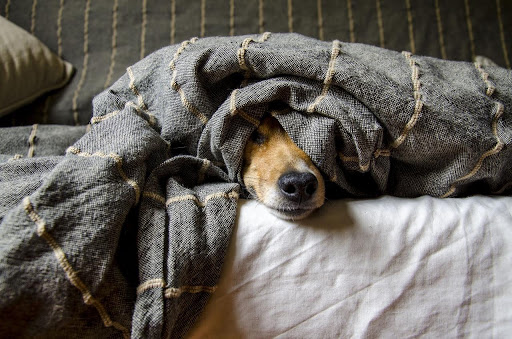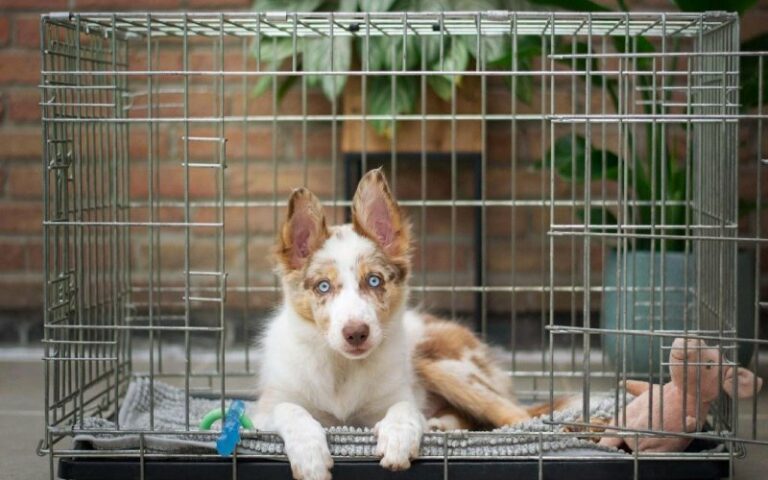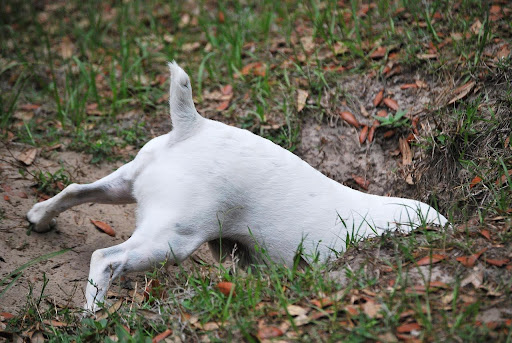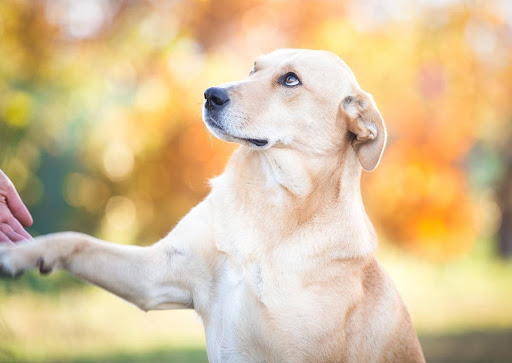How To Comfort a Dog During a Thunderstorm and Fireworks
Humans understand fear and know how to deal with it. We understand thunder and why it happens, but dogs do not. We understand fireworks, how they work, and the fact that they are not a danger to us. But our dogs do not.
And what a dog does not understand can make it fearful. Fear can sometimes turn a scared dog into an aggressive one because that is the only way it knows how to protect itself.
In this guide, we study sound or noise phobia in dogs (mainly the fear of thunder and fireworks), its signs, and some tips to comfort your dog when it is afraid.
What is Sound or Noise Phobia in Dogs?
Fireworks and thunder are the most common triggers of sound or noise phobia in most dogs. A nervous or anxious dog could also be afraid of other loud noises or household sounds like a vacuum cleaner, a car backfiring, a toaster popping, construction noises, the beeping of the clothes dryer, the sound of a blender, etc. These sounds can spark fear, anxiety, or stress in some dogs.
Statistics show that nearly 20% of dogs of all ages and breeds suffer from noise phobias of some kind- severe enough that their owners need to seek professional help.
Signs of Sound Phobia in Dogs
If a dog is afraid of thunderstorms, fireworks, or other loud noises, it might cringe and cower. It could also display the following signs:
- Tail tucked between its legs
- Ears pulled back
- Lips curled back
- Excess drooling
- Seeking attention, or conversely, hiding
- Shaking or shivering
- Reacting aggressively when handled; snarling, whining, or growling.
- Inappropriate defecation or urination
- Attempting to escape
Pets with extreme noise phobias even try to run away from their homes during thunderstorms or fireworks. Fourth of July is usually a time when many animal shelters have to take in rescued dogs who have escaped from their homes.
When thunderstorms or fireworks start, the dog might go into full-blown panic mode. It is not unusual for dogs to jump through windows or glass doors, dig under the fence, or even through carpets at doorways to attempt to escape.
Noise phobias can significantly impact a dog’s quality of life. A scared or nervous dog is at risk of injuring itself. In some cases, it could even turn aggressive and redirect its fear on its humans. Needless to say, a dog’s fear of loud noises can be stressful for the dog owners who often feel helpless and don’t know how to calm their pets.
Causes of Sound/Noise Phobia in Dogs
Instinct
Humans and dogs have the instinct to react to loud noises wired in their brains. The brain triggers a flight-or-fight response on hearing loud noises which is essential for our protection. In the past, this response helped the individual/dog stay alive. However, in modern times, dogs do not have to fear predators or other dangers. Oversensitivity to sounds like fireworks and thunder can result in stress and anxiety in the dog.
Past Trauma
Abused dogs or dogs with a negative experience of loud noises are more likely to develop thunderstorm phobia. Thunderstorm phobias are also complex since the thunder is often accompanied by darkness, flashes of lightning, buildup of static electricity, falling branches, etc. An already nervous or skittish dog could get extremely scared and panic due to these changes.
Tips to Comfort Your Dog During a Thunderstorm or Fireworks
Pet owners need to understand that their dogs won’t outgrow their fear of thunder/loud noises overnight. You need to act as soon as you first notice the fear in your dog. You also need to follow a multi-modal approach when dealing with your dog’s anxiety of thunder or fireworks.
Here are some steps you can take:
Use White Noise
Start with the simplest solution. As far as possible, avoid exposing your dog to the sounds it is afraid of. For example, avoid taking your dog to see fireworks. Or, when thunderstorms occur, keep your dog in a closed, sound-proof room and play soothing music or white noise to drown the sound of thunder.
De-Stress Your Buddy With Treats
Use this method, when you cannot avoid the triggers. Distract your pet with tasty treats, a favorite toy, or a dental chew or toy to keep it engaged. Make sure this reward is only used when the dog encounters the scary noise.
Use Pheromones
Dog-appeasing pheromone (DAP) therapy has been proven to help dogs with fear and anxiety. Almost 90% of dogs are known to respond positively to this therapy. It is a holistic and chemical-free way of calming dogs. The pheromones are similar to those released by nursing dams, so the dog feels safe around them. They are available in the form of diffusers, sprays, collars, etc.
Try Natural Calming Supplements
Natural supplements with CBD are known to calm dogs. They are available in the form of soft chews/treats, powders, and syrups. You can administer them through your pet’s food. Do talk to your vet first so they can recommend the right supplement based on your dog’s overall health.
Use Weighted Vests
Also known as Thunder-Shirts, weighted vests are lightweight, breathable vests you use to swaddle your dog, just like wrapping a baby in a warm blanket. The lightweight yet cozy jacket calms and relaxes your dog as if you are hugging it. The vests are also useful during fireworks, trips to the vet, to relieve separation anxiety, etc.
De-sensitize Your Pet to The Sounds
You can slowly get your dog used to the sound of fireworks or thunderstorms by playing CDs with these sound recordings. Initially, you can play these CDs in another part of your house away from the fearful dog.
Gradually, move the sound nearer to where it sleeps. Get your pet to associate the sounds with ‘something happy and positive’, Eventually, your dog should be able to accept the sounds without having a fear response.
If these techniques do not work, please talk to your trainer!
205-402-8448
Olk9alabama.dog





